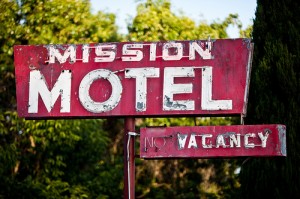 Over the past five to ten years, much discussion has taken place about the need for revised business models for the arts industry. On the expense side this comes from recognition of the labor cost challenges faced by the performing arts and the capital cost struggles of edifice-centered organizations (museums and, again, some performing arts institutions). On the revenue side it comes from shifting trends in philanthropy and public policy and from demographic and social changes impacting arts consumption.
Over the past five to ten years, much discussion has taken place about the need for revised business models for the arts industry. On the expense side this comes from recognition of the labor cost challenges faced by the performing arts and the capital cost struggles of edifice-centered organizations (museums and, again, some performing arts institutions). On the revenue side it comes from shifting trends in philanthropy and public policy and from demographic and social changes impacting arts consumption.
I have a continuing, nagging concern that while business models are important, the real issue that needs to be addressed is a deeper one. It may be that re-evaluating our “mission model” is even more critical.
A mission model for this millennium would consider three elements: the role of art, the relationship with the community, and the level (or, better, range) of involvement provided for those outside the institution with the content of the art presented. (For more re: mission, see The Metamission of Arts Institutions.)
- What is the role of art in the organization? This is the first, critical question because as long as we place art exclusively at the center of our work we are on an (often) unconscious path to idolatry that confounds (and antagonizes) most of the public and conflicts with the public service mission of our 501(c)(3) organizations. Certainly, preserving and supporting reflective art, art that feeds the soul, must be a vital part of our missions, but it cannot be the sole reason for being. Art is the means through which we interact and the vehicle through which we improve individual and collective lives.
- What is the relationship between the arts organization and the community? I do not hold that any arts organization should solely be a community service organization. Some choose to be such and that’s valuable. However, a service mindset rooted in mutuality of benefit is vital, as a practical matter, for the sustainability of our institutions. Otherwise, there simply is no future for them.
- What is the range of involvement provided for those outside the institution with the content of the art presented? The unexamined assumption on the part of many organizations is that community members are spectators for the work chosen by the arts organization. Many in the arts establishment will continue to operate this way. (There are, however, social changes at work to make this approach less effective as time goes on.) But it will be increasingly important for organizations to make conscious choices about this issue. Alan Brown and Jennifer Novak-Leonard have created a continuum describing the range of options in Getting In On the Act: How Arts Groups are Creating Opportunities for Active Participation, a report on audience involvement they developed for the James Irvine Foundation. The labels below are not identical to theirs (and I’ve added one), but the general ideas are the same.
- Spectator
- Passive observer
- Active learner
- Participant
- Curation (selection of existing work)
- Implementation (following an artist’s instructions)
- Creation
- Co-creator (with artist guidance, framing)
- Creator
- Spectator
For the future, the choice of what level(s) of community involvement to support can, and I think should, be a mission-level consideration for arts organizations. There need not be a single role for community members’ interaction with the arts organization. A range of interaction types will be more welcoming to the broad community and vocabulary for this is helpful in imagining possibilities.
Examination of the fundamental mission of the organization, acknowledging that substantial change in habits of thought may be necessary, is an important exercise for the arts industry as we seek to chart paths to a viable future.
Engage!
Doug
- Photo:

 Some rights reserved by Thomas Hawk
Some rights reserved by Thomas Hawk
